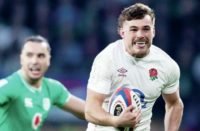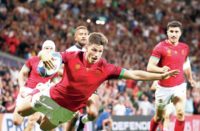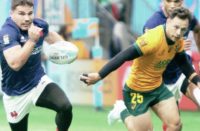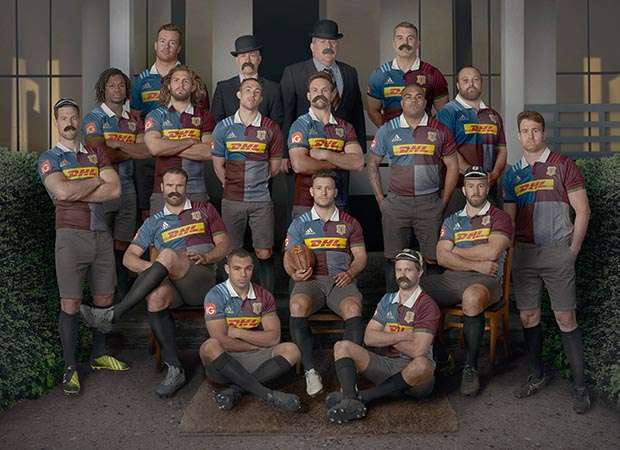 What's in a shirt? Harlequins launched their special 150th anniversary 1st XV shirt last week and the famous quartered colours remain to the fore – chocolate brown, French grey, magenta and brown – which is important. Their world famous shirt defines the club more than any other rugby team with the possible exception of the All Blacks.
What's in a shirt? Harlequins launched their special 150th anniversary 1st XV shirt last week and the famous quartered colours remain to the fore – chocolate brown, French grey, magenta and brown – which is important. Their world famous shirt defines the club more than any other rugby team with the possible exception of the All Blacks.
The colours are extrovert and colourful and not really for the shy retiring types. When you pull on that shirt the onus is to make a splash. The ordinary, routine and mundane are anathema.
Of course, this all goes back to the origins of the club or at least it's morphing from Hampstead FC into Harlequins FC. Hampstead FC were formed in 1866 but four years later, with the majority of members seemingly based in central or west London, the decision was made at the AGM at the old Eyre Arms Tavern, St John's Wood, to reconstitute the club.
As the club still owned club notepaper with the HFC monogram, and indeed a number of club ties, it was thought a good idea for the name of the new club to begin with H at which point a number of club members produced a dictionary and started shouting out suggestions. Very quickly Harlequins proved the most popular – a waggish trickster, court jesters, a person who makes funny moves. Perfect.
And what did Harlequins wear historically? Well the knave's court jester quartered garb of course. Having settled on the name, the colours followed and having decided on the dazzling ‘look at me' kit their approach to rugby and life was virtually predetermined. One of the more educated members also suggested a club motto Nunquam Dormio. Never sleeping.
The name and the concept was clearly to resonate with many others because in 2016 there are, at the last count, 80 rugby clubs worldwide who use the name Quins or Harlequins in their title. Seven are officially affiliated with the mother club – Pretoria Quins, Hamilton Quins in New Zealand, Melbourne and Hobart Quins in Australia, Kenya Quins, Dallas Quins, Abu Dhabi and Future Hope Quins, the schools team of former Calcutta Street Children founded by Harlequins member Tim Grandage.
For many of those formative years Quins were a nomadic club just struggling to survive. After moving from Hampstead they used at least 17 ‘home' grounds before finally settling at the Stoop Memorial in 1963. These range from the Old Sluice House in Highbury to Pages Cricket Ground in Tufnell Park, Stamford Brook, Beaufort House Fulham, Chiswick Park CC and the Polo Grounds Wimbledon. All sorts including, for the best part of 80 years on and off, the use of Twickenham which was a major coup on the part of Adrian Stoop, their guiding light either side of World War I.
Quins had already established and open attacking style before the emergence of Stoop with Cyril Wells, a talented sporting all-rounder from Tonbridge School, pulling the strings but the club reached a different level altogether between 1905 and 1914 which is generally described as the Stoop era.
Quins' glamorous back division, headed by Stoop and Ronnie Poulton-Palmer, ran amok with many earning England honours and they also produced forwards of substance such as England prop Curly Hammond, who also set the bar high for future Quins forwards in the drinking stakes.
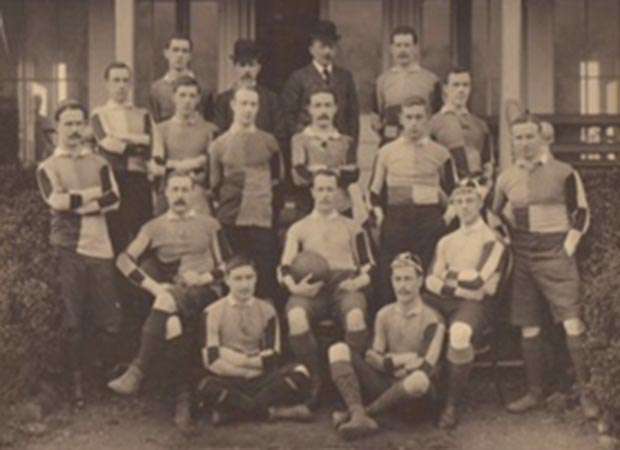
Hammond earned the title of “Beer King of Germany” after accepting a challenge from a local dignitary after a game against Germany in Frankfurt. Hammond reportedly polished off ten glasses of beer one after another, the last four while standing on a chair.
After the War – in which 62 playing members made the ultimate sacrifice – a young gung-ho RAF officer William Wavell Wakefield soon emerged as the key on-field figure. Like Stoop he was dedicated to physical fitness – a 400m hurdler and competitive skier – and, encouraged by Wakefield, Quins placed a big emphasis on Sevens when the Middlesex Sevens were established in 1926, winning the first four titles. Harlequins were packed with internationals including Wakefield and England flyers Richard Hamilton Wicks and John Gibbs.
World War II took a heavy toll and deprived the club of an outstanding player and personality in England forward Robert Marshall who had seemed likely to emerge as the next major club figure after Stoop and Wakefield. Marshall was the most athletic forward of his era but was killed at the age of 27 four days after the war ended.
He had served as a captain of a motor gunboat conducting clandestine operations around the North Sea but his luck ran out as he was ferrying a group of mercantile captains to Gothenburg to take control of liberated ships when his gunboat ran into uncharted mines. He was only on duty because he had volunteered to step in for a colleague Jan Mason who was receiving the DSO from the King at Buckingham Palace.
Gradually the club re-mustered and rebuilt, still retaining its distinctive ambience while also pushing the boundaries. In 1954 Quins became the first English club to stage regular floodlight club matches when they added White City to their many ‘home' venues.
The rugby DNA remained the same however, probably best epitomised by Ricky Bartlett, the cleverest of inside backs and a key member of England's 1957 Grand Slam team. Cliff Morgan rated Bartlett one of his favourite players and most respected opponent yet somehow he won only seven caps even though he never lost in England colours.
The notion that a place in the Harlequins side guarantees you preferential treatment with England has never stood close examination. Lock Mike Davis should have been an England fixture for decade or more but only won 16 caps, Peter Dixon should have been capped earlier while stalwart prop Graeme Murray was not capped at all despite his formidable reputation.
The Sixties were busy with an adventurous tour of Kenya in 1961 organised by their sister club in Nairobi and the tumultuous permanent move to what is now the Stoop Memorial Ground, what was then a little used athletics track. The club continued to tour with gusto, Wales every Easter for the 1st XV and France for second string Wanderers. Such was the Wanderers' strength that a number of players – Scotland centre Micky Grant for example – were capped while playing for them rather than the 1st XV.
The centenary season was celebrated as if there was no tomorrow with a tour to South Africa organised mainly by Pretoria Harlequins and a barrage of celebratory matches and functions including a summer ball at Twickenham attended by 1,200 with a marquee running the length of the field. Carriages ordered for the unlikely hour of 4am.
Survivors still go misty-eyed over that shindig but the efforts of that season in which Quins also won the Middlesex Sevens again took their toll and to the surprise of nobody they lost nine of their first ten games the following season.
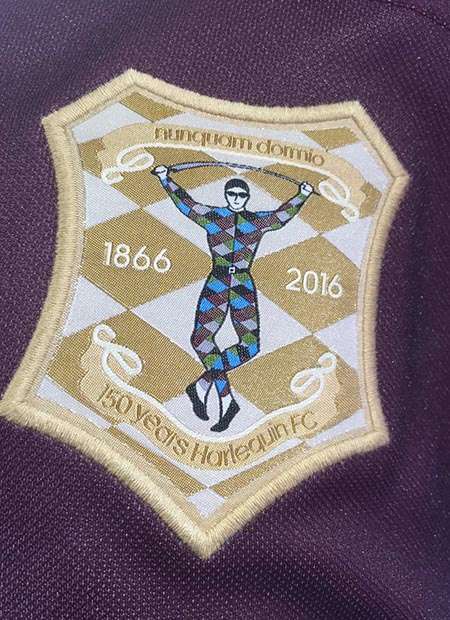
Competitive cup rugby was the big innovation of the Seventies and although Quins were to crack it in later decades with four appearances in the finals, including two wins, their early experiences were salutary. There was a shock home defeat against minnows Wilmslow and another thumping loss one year up at Orrell which skipper Bob Hiller had jokingly, and memorably, described as a lay-by off the M6.
The Wilmslow tie was an eye-opener in more than one sense with the so-called city slickers of Quins being totally upstaged by the Wilmslow committee who arrived in a private helicopter, landing on the Stoop pitch itself before nipping over the road to watch their famous win at Twickenham. A couple of post-match beers back at the Stoop a quick circuit of the pitch in their helicopter and they headed for home in a cloud of dust.
The city slickers tag is another stereotype that needs qualification. Yes, there was historically definitely a connection with the Square Mile but by the Seventies this was also the club of the lorry driving Claxton brothers – all three of them – and Cornish farmer Stack Stevens while the glory days of the late Eighties and early Nineties was masterminded by a chef – Dick Best – and included the likes of London chippie Jason Leonard, Geordie Micky Skinner and the Yorkshire combo of Peter Winterbottom and Brian Moore.
The classic Dick Best squad – famously contributing seven to the England side in the 1991 World Cup Final – trained harder than most and possessed a hard edge up front but still managed to turn on the style in big cup matches. For decades, however, league honours eluded them.
That situation gradually rectified itself but the club's reputation took a huge dent with the inexplicable 2009 Bloodgate incident. Inexplicable in that although we eventually discovered exactly what happened, the question ‘why' hung in the air. Why did Quins of all club resort to an almost comical schoolboy prank that led to dire consequences both for the club and the individuals involved?
Amidst intense public scrutiny Quins had to re-build their reputation and under Conor O'Shea claimed a splendid Premiership title in 2012. The slate was wiped clean and that triumph four years ago hinted at a new base level of performance which Quins, to their own frustration, still haven't quite delivered.
Constant but not consistent. Constantly positive, attacking and innovative. Constantly a big presence and voice on the English club scene over 150 years. But consistently pulling up just short in the Premiership and the European Cup although there have been three Challenge Cup titles.
The challenge as they take stock and celebrate the 150th anniversary is to change that trend without losing the club's heart, soul and point of difference. To honour the shirt but become serial winners. Nunquam dormio.


